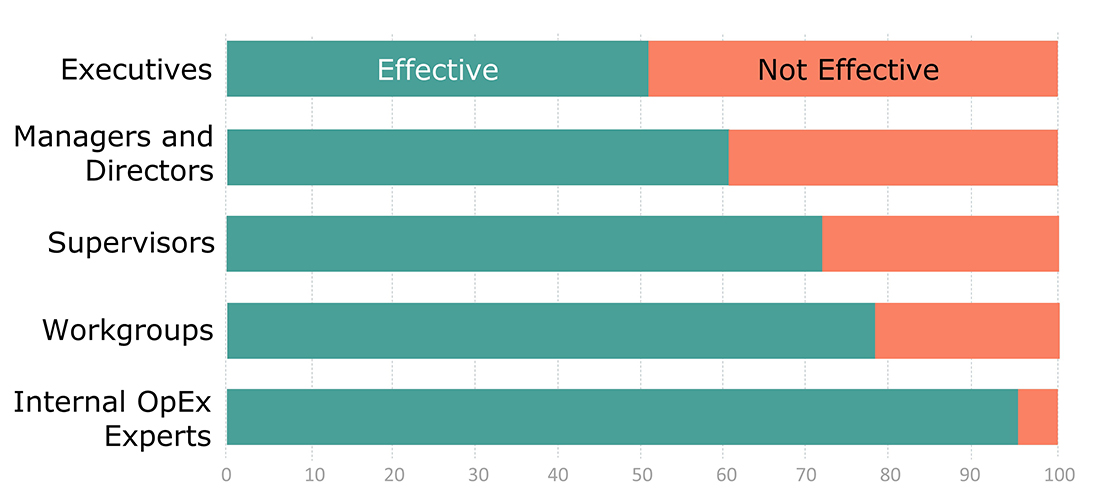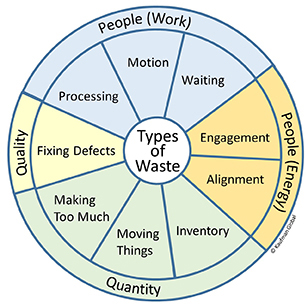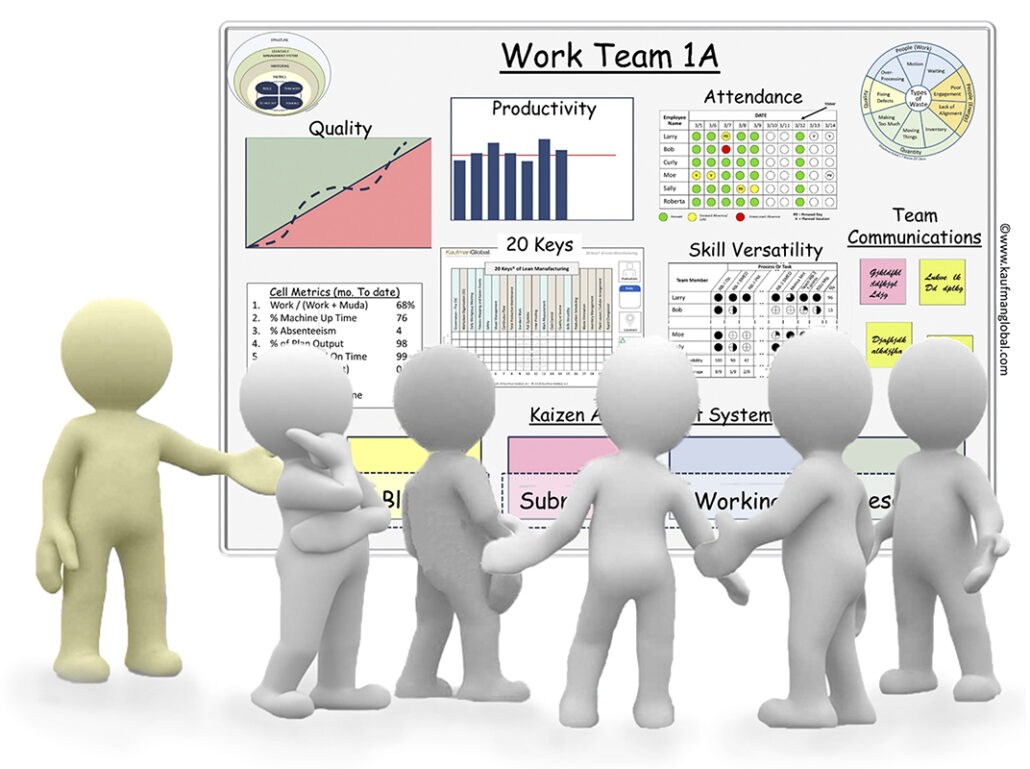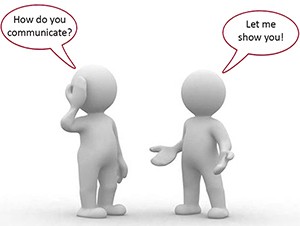Posts
Three OpEx Questions and Answers
/in Engagement, Leadership /by Amy HowardA small group recently posed a few questions to us about Operational Excellence, leadership and change. They were looking to get started on their journey and wanted to understand our perspective on some of the critical elements. Here’s a recap of the ensuing discussion with OpEx questions and answers. If you’ve got some questions about OpEx, send us a note (hit the Contact button and start the discussion there). With a dialogue like this, we all learn something.
—
Q. Leaders mostly understand the benefit of engagement and often see OpEx as a way to obtain this, yet it seems that leaders are not well equipped to make this happen. In fact, the training for leaders is often ineffective. How do we overcome this gap?
A. The graph below is sourced from our YE16 OpEx survey report. It shows how the surveyed organizations ranked the effectiveness of training at various levels of the organization and across a variety of business types:

Img 1 – The relative effectiveness of OpEx and Engagement Training at different levels of the organization. It’s notable that training is deemed most effective at the lowest levels of the organization while executive level training is deemed effective only about 50% of the time.
We can all see the connection between better engagement scores and improved performance, however there is a lot of confusion about what good engagement looks like. Often engagement is thought to be more frequent face time between bosses and subordinates, 360 feedback, suggestion programs, and so on. Rather, good engagement is about giving people the ability to directly influence their work. It recognizes basic human needs that include the power to make decisions, the ability to control outcomes and being part of something bigger. These attributes are not naturally occurring in many work environments so equipping leaders to enable OpEx is about training and coaching them on the essential actions and behaviors they must take to engage and align the organization from top to bottom.
Our approach to ensuring effective leadership training starts with the Managers / Executive Lean Overview workshops. These sessions quickly inform the team with a common vocabulary, awareness and understanding of:
- Lean concepts and the Lean enterprise
- Developing the right culture, structure and behaviors to support Lean
- Managing resistance to uncertainty, and
- Driving measurable results linked to the business strategy and objectives
Tools and methods are covered, but gaining expert capability on them is not specifically intended. Rather, this portion of the workshop is meant to provide context for how front line practitioners apply problem-solving tools to achieve desired business outcomes.
Our primary objective with leaders and managers is to provide insights that help them define and develop their own leader standard work. This means doing the hard work of changing some of their own behaviors and habits to be able to actively coach and demonstrate support for Lean to the organization as implementation begins.
Beyond training and workshops, coaching is an important element that we always employ during project work with clients. Coaching is about observing behaviors and suggesting alternatives that can be more effective at delivering certain results. A simple example: If you want people to be more engaged, ask leading questions as opposed to prescribing a potentially ill-conceived solution. In this way, everyone learns something and engagement is supported instead of stifled.
Q. If the leaders are not equipped to lead engagement, can implementation still be successful if delegated to a lower level?
A. No. We’re talking about a shift here that must be valued up and down the organization and especially at the top. These values drive subtle and not so subtle behaviors that become part of the culture and transcend market shifts and personnel changes. Here we assume “implementation” to be a sustainable OpEx system. A leader who is equipped to lead engagement not only understands the benefits, but values the operating norms that better engagement brings.
Since a lot of the heavy lifting and day-to-day activities of implementation are in fact delegated, it’s important to understand how to help leaders do this. We talked about the training and coaching aspect for leaders in Q1 above. In addition to understanding the value of better engagement, the organization must know how to do it.
Everyone in the organization must be expected to spend a small percentage of time on improving the business ― as opposed to running the business. In the simplest terms, this means allowing workers some freedom to fix problems that affect their day-to-day work at the micro-process level. Supervisors and middle managers aren’t exempt: They too should spend about an hour a week addressing slightly more “macro” problems that affect their areas and people. At all levels, the most effective improvement efforts are team-based to drive process ownership and accountability.
Since exactly how to do engagement can be described, the activities can be tracked. This is important because it moves leaders beyond the idea of just “valuing engagement” (because who doesn’t right?) to “knowing how to DO engagement.” Only when this happens can implementation be effectively delegated.
Q. How important are engagement scores to measuring the success of OpEx? What measures would be more important to determining success?
A. Engagement scores are important. OpEx and engagement scores (from surveys and audits) are directly related. Successful Operational Excellence is in large part the result of good engagement. So engagement scores are a good lagging indicator of OpEx and a great leading indicator of operational performance.
A focus on leading indicators is a good place to start. Here’s a way to think about indicators:
- Leading indicators ― Instead of a “result” metric, leading indicators are often the measurable actions that are taken to achieve a result. For engagement these are the structures and mechanisms we use to cause engagement – for example, the Executive Steering Committee (ESC), and Lean Daily Management System®. These structures describe specific, measurable activities that are part of a high-functioning OpEx system.
- Middle indicators are the process performance measures ― and the associated plans to improve ― at the macro and micro-process levels. These are a tangible reflection of the living adoption of OpEx. The organization likes these a lot because they show something is being done to improve results.
- Engagement scores are an important lagging indicator that provides proof and external validation that the OpEx system is working (or not). Those who score the highest go beyond better communication and asking people for more feedback. They incorporate ways for employees to have direct input into the work that they do – that is, the work that is relevant for them.
==========
Want more detail on these topics? You can download the full survey report – An Examination of Operational Excellence – from the Resources section of our website. You’ll need to register.
To learn more about enabling leadership to connect the dots between engagement and value, check out our White Paper: Engage the Organization – And a Performance Culture Will Follow.
Lean Daily Management System
/in Engagement /by Jerry TimpsonThe Lean Daily Management System (LDMS): Using Structure to Engage Employees and Optimize Value
In the late 1990s, when Kaufman Global developed the Lean Daily Management System® (LDMS®), we recognized that “Lean” as a method for improving business was often viewed as a set of tools aimed at machines and inventory. On the surface, and in the simplest of explanations, it was considered to be a group of useful techniques that could be “directed and applied”. I think this was more of a Western interpretation that still reverberates today. In this, the practitioners of the day put less emphasis on the human element and treated engagement as a collateral benefit of Lean, rather than the primary contributor to Lean results. Much of the information available focused on technical aspects such as pull systems, inventory leveling and quick change-over with a bias for discrete manufacturing versus continuous flow, business process or service industries.
Consider these highlights from the 1990s Lean landscape:

Taiichi Ohno’s original waste wheel updated with People Energy wastes: Engagement and Alignment
- Taiichi Ohno’s seven wastes had not yet been updated to include People Energy Wastes of Alignment and Engagement. This has since been added to present day waste wheel diagrams (right), but it is an addition that Ohno probably would agree with today. He keenly understood the value of engagement and human intellect when he said in his book Workplace Management (Ohno, 1988), “Only the gemba can do cost reduction.”
- The Machine that Changed the World (Womack, Jones, & Roos, 1990). For a decade this book was the primary source of Lean inspiration as manufacturers attempted to emulate Toyota. It is still a compelling description of the benefits of Lean vs. more traditional forms of production. The book describes worker engagement as an important element of the Toyota Production System but it does not peg it as the foundation. Lower inventories and improved product flow are viewed as the causes of higher productivity and better quality when they are actually the effects of a more engaged workforce.
- Learning to See (Rother & Shook, 1998). All about Value Stream Mapping, it is still the preferred source for this technique for understanding waste and value. It is most effective in manufacturing environments where inventory can be converted to time.
Power to the People
Our fundamental belief then and now is that Lean is a people system, not a technical one. Think of Lean tools like Quick Changeover, Error Proofing, Pull Systems, or Kaizen Events as waste elimination shovels. They work great, but they are useless without some keen insight about where to dig. This was the missing link we sought to address as we first described LDMS. It gives natural work teams the ability to make decisions about where to dig based on their understanding of their issues and performance. Combine this insight with the authorization for them to actually take control and utilize some structured problem solving techniques, and you have a self-regulating improvement engine.
The Lean Daily Management System Methodology
It’s about workgroup engagement:

The Lean Daily Management System – Shift Start-Up meeting at a Primary Visual Display board.
The Lean Daily Management System is done by intact workgroups with common tasks and deliverables. They perform the standard procedures that help teams continuously improve their day-to-day work (Kaizen). Vital components of the Lean Daily Management System:
- A daily shift start-up meeting (SSU) (no more than 10 minutes) at the
- Primary Visual Display (PVD) board
- Kaizen Action Sheet (KAS) improvement system
- The 20-Keys® for assessment, planning and action
- Daily short interval coaching (SIC) by supervisors
The Lean Daily Management System is the primary means of engaging the broader organization. It is the manifestation of work group participation and this engagement is the fastest route to the overall objective of Lean which is to maximize customer value by minimizing waste. Or said another way: Deliver at each step what you need, when you need it, at ever-increasing levels of quality and customer satisfaction. While this cannot be achieved via top-down control, leadership does have an important part to play. “Doing” LDMS must be supported, expected, encouraged and required from above, otherwise it won’t happen consistently enough, broadly enough or often enough to become the way the organization does business.
LDMS Behaviors and Actions are Specific and Observable
 The constructs of LDMS are specific. They describe activities and behaviors that are observable. This gives leadership a natural and specific way to interact with and support the teams. For example, one could ask: “Do you have good teamwork? Are you communicating? Do you measure your work and performance?” In an LDMS environment, all of these things are observable and the teams are able to speak directly to how they do it. That empowerment drives accountability and process ownership downward, where it belongs.
The constructs of LDMS are specific. They describe activities and behaviors that are observable. This gives leadership a natural and specific way to interact with and support the teams. For example, one could ask: “Do you have good teamwork? Are you communicating? Do you measure your work and performance?” In an LDMS environment, all of these things are observable and the teams are able to speak directly to how they do it. That empowerment drives accountability and process ownership downward, where it belongs.
The Lean Daily Management System gives organizations outside the realm of manufacturing something to grasp. When you think of Lean as waste elimination and LDMS as the standard work of an engaged organization, it opens a world of possibilities that go beyond the shop floor. In our experience, LDMS works everywhere. Contents are adjusted – metrics for example will be different in functional and administrative environments than in manufacturing. But when people actively participate in improving the work that they control, they always find ways to innovate and adjust appropriately.
Where is it working? Here are a few examples:
- Industry: Goodrich, AGCO, Becton Dickinson, Johnson and Johnson, Genentech, Haldex, IR, Goodyear, Owens Corning, Nabors
- Healthcare: Sutter Healthcare Systems, Oregon State Hospital, Mississippi State Hospital, Lincoln Healthcare Network
- Government: State of Oregon, State of Indiana, State of Delaware, UK Highways Agency
Why The Lean Daily Management System Works
Should you do it?.. Of course! LDMS makes Lean sticky.
- People have more personal control and ownership of the work that they do. Individual and team accomplishments become visible.
- Performance issues and opportunities are more transparent.
- Process changes and improvement efforts are better connected to day-to-day activities and standard work is easier to achieve.
- LDMS engages minds and hearts and provides a vessel for employees to contribute in ways that are meaningful and rewarding to them.
Even with all these positives, be prepared for some resistance. It’s something new and people will have lots of questions as the system is coached into the organization. Leaders needs to be encouraged to stay the course until the culture starts to recognize that a broad and proactive approach to performance improvement is the best way to eliminate waste and improve customer value.
********************
Kaufman Global began teaching and implementing the Lean Daily Management System in 1999. It was first described and published in our groundbreaking White Paper: WIn-Lean® Manufacturing in 2000.
In 2017 we updated our content to include even greater emphasis on the fact that the waste of People Energy (Engagement and Alignment) is still the greatest opportunity for any organization seeking to improve performance. For a full description of how and why LDMS fits into any Lean system, download a copy of our White Paper: Implementing Lean Manufacturing: A Holistic Approach.
Results from Kaufman Global clients who have implemented and are using the LDMS:
Oregon State Hospital uses the Lean Daily Management System and here: Oregon State Hospital Presentation
BD uses LDMS everywhere: BDs Corporate Citizenship Report – see page 36
Tier 1 automotive company that deployed the Lean Daily Management System globally
Pharmaceutical company uses LDMS as a cornerstone of enterprise Lean implementation
********************
References
Ohno, T. (1988). Workplace Management. Cambridge, MA: Productivity Press.
Womack, J., Jones, D., Roos, D. (1990). The Machine That Changed The World. Based on the Massachusetts Institute of Technology 5-million dollar 5-year study on the future of the automobile. New York, NY: Rawson Associates.
Rother, M., Shook, J. (1998). Learning To See: Value Stream Mapping to Create Value and Eliminate Muda.
Lareau, E. W. (2000) White Paper:WIn-Lean® Manufacturing.
Transform and Sustain: Three Rules for Better Results
/in Engagement, Leadership /by Jerry TimpsonNothing is Transformed if it Cannot be Sustained
 Clients never say: “We want to transform and do better, but we don’t care if we sustain the improvements.” Clients always profess a sincere desire to sustain results. This intent is so pervasive that during the past 20 years we’ve seen the rise of Operational Excellence as a legitimate function across wide swaths of business and industry. Yet most organizations fail to realize this apparently lofty goal. Low levels of lasting success are usually explained at a tactical level, but the reasons that leaders and their organizations get it wrong goes much deeper.
Clients never say: “We want to transform and do better, but we don’t care if we sustain the improvements.” Clients always profess a sincere desire to sustain results. This intent is so pervasive that during the past 20 years we’ve seen the rise of Operational Excellence as a legitimate function across wide swaths of business and industry. Yet most organizations fail to realize this apparently lofty goal. Low levels of lasting success are usually explained at a tactical level, but the reasons that leaders and their organizations get it wrong goes much deeper.
To get a handle on what is happening and why, we explore some of the traditional norms, individual behaviors and corporate incentives that must be rethought to enable transformation success. As a first step, let’s define a few simple rules that are the foundation of any successful initiative:
Rule 1 – The Environment IS Dynamic
It’s obvious to say, but our environment is dynamic. Everything changes all the time. “Sustain” conveys a sense of holding something – a process or procedures for example – in place. It’s time to re-evaluate this concept and acknowledge that in a dynamic environment, sustain doesn’t mean we pin something to the ground. Rather, it means we stay in lock-step with a moving target, consistently and credibly adjusting and improving.
Rule 2 – Understanding Value
Value is best understood where it is created. People know the most about optimization of the things they work on. Even more important, people care more about the things they work on than the things they don’t. Failure to grasp this rule is why top-down control of improvement systems doesn’t work well and never lasts.
Rule 3 – The Leader’s Role
For any of this to work – meaning, ongoing improvement and sustainment ̶ the organization must be engaged and stay engaged. In simple terms:
More Engagement Equals Better Results
A primary (perhaps the primary) function of leadership is to compel engagement. Easier said than done, we can state flatly that engagement is an activity that can be measured and when it’s missing, overtly addressed. Experience tells us that if engagement is not compelled, it will not happen enough to deliver lasting improvement.
When everyone works on solutions with cadence, structure and discipline, peers are required to spend time together improving their deliverables along the value stream. Team dynamics increase accountability and generate performance momentum. This is the catalyst for sustainment.
Internalizing and applying these rules to any improvement system increases the odds of success. Fail to apply them and results will be sub-optimized at best. Going to the next level requires understanding the underlying organizational behaviors that come into play in the struggle to transform and sustain. Here they are:
Engagement is Not Understood or Valued
The building blocks of lasting transformation revolve around getting and keeping everyone engaged (Rule #3). Unfortunately, organizational dynamics and behaviors that deliver this are seldom experienced or even witnessed. And, “What good looks like…” is rarely part of one’s education or training curriculum. Understanding the structure of engagement so that it can be baked into the DNA of the system is essential to going beyond the “what” of transformation and getting to the “how” of it.
How to Sustain is Not Defined
In some respects it is difficult to separate transformation and sustainment. They are two sides of the same coin. But if we see engagement as the glue that holds these concepts together, it deserves a definition that is simple enough to act upon. Therefore:
The organization is engaged when you, your peers, your superiors and subordinates spend at least one hour each week actively improving the business.
This is what good looks like. When you overtly define engagement at an individual level, the behaviors and actions of it can be observed, measured and mirrored. Too often, leaders want everyone to really “get it” before they do it. Transformation happens in the reverse.
For Many, Putting Energy Into Sustaining Activities Doesn’t Pay
Transformation initiatives most often occur inside a business emergency. During these times, communication spikes, teams are formed, actions are chartered and things get done. It feels great! When it’s over, the quorum disengages, momentum wanes and everyone reverts to business as usual. The final step is recognition and reward conveyed for fixing the crisis. Big changes, big projects, and big results – these are the things that get noticed and rewarded. Everyone working on small, incremental changes and improvements for the better? … Yawn.
When the requirements for sustainment are poorly defined, not well understood and appear difficult to measure, they are avoided. Success requires broad participation, openness to new ideas and a convergence of standard, simple mechanisms aimed at improving the business. Overtly make the connection between transformation and sustainment, then weave it into the compensation, reward and recognition system. Make it safe and make it pay.
Proactive Problem Solving Might Seem Simple and Boring… and People Are Easily Distracted
The concepts and execution requirements described here are so simple that they are easily dismissed. The ideas of broad inclusion and a flatter organization often require a significant re-evaluation of organizational norms and are naturally avoided. Any distraction; the latest crisis, a new technology or any approach or method that might require less coaching and change management is a welcomed relief. Without some overt activities that demonstrate our adherence to engagement, most will shift away – usually with the tacit approval of their bosses who never got it in the first place.
It Disrupts the Status Quo
When engagement and sustainable transformation starts to occur, decisions are pushed down in order to optimize absolute value. This is a shift that challenges well-established networks that are built around personal relationships and existing dynamics. It’s disruptive. This above all others is the biggest reason for failure.
The truth is this shift frees energy that is traditionally spent on re-work, redundancy and errors. Not everyone will see it this way but when the new system of engagement is well defined and well structured, resistance is easily surfaced. Shifts in organizational and personal behavior are required. Recognize the fact that something that threatens entrenched relationships and systems succeeds only with a crystal-clear mandate, a well-defined plan and adequate coaching.
With all these obstacles, it’s no wonder the majority of organizations and leaders lament an inability to sustain their transformation and continuously improve. Start by viewing the system holistically with a keen eye on organizational dynamics, individual behaviors, simple definitions and an approach that is firmly linked to activity-based performance measures. This will help avoid rework that is exponentially more difficult the second, third, and fourth time through.
**********
For information about how to engage workgroups and push decision making down, read about Kaufman Global’s Lean Daily Management System.
Employee Participation: 5 Ways to Boost Engagement
/in Engagement /by Kaufman GlobalOver the past 25 years, we’ve worked with clients around the world by supporting and / or leading Lean initiatives. If there’s any major “lesson learned” we’ve taken away, it’s that employee engagement is critical to success. Wouldn’t it be nice if there was a magic potion that could be consumed throughout an enterprise to solve problems or improve efficiencies? Unfortunately, it will never be that simple. The rate, degree and level of change for Continuous Improvement endeavors hinges on people.
Within any transformation journey, employees must be empowered and engaged. Improvement happens in the field, on the factory floor, and within the office one employee at a time. When effective leadership support is in place, employees are more likely to embrace change. Without it… Not so much. There must be concentrated focus on active engagement ― connecting employees to the work they control.
It’s well known that as employee engagement increases, so too does organizational performance. So what are the top, most proven methods for increasing employee engagement? Integro Leadership Institute President Keith Ayers recently identified five leadership skills that are most effective.
#1 Build Trust
Trust is an essential ingredient in increasing engagement. The first thing leaders need to know about building trust is that it does not happen just because you are trustworthy. People do not know how trustworthy you are until you demonstrate it by using trust building behaviors and the most important of these behaviors is to trust others. We build trust by trusting others. This requires a basic belief in people, a belief that people are essentially trustworthy. After all, if you have untrustworthy employees, why did you hire them and why are they still there?
#2 Mentor
The relationship between the employee and his or her immediate manager is a critical factor in how engaged the employee will be. We have to get away from the idea that Managers cannot mentor the people who report to them. Employees need feedback; they need to know how they are performing regularly ― not just once a year at review time. They must be able to discuss their needs for growth and development with a Manager who cares about them. Effective leaders need to give and receive feedback — to coach and counsel employees in a way that increases engagement and commitment.
#3 Inclusion
Whether employees feel like an insider or an outsider also impacts their level of engagement. Effective leaders know that everyone on their team has strengths the team needs, and they know how to get the best out of each person regardless of their ethnic background, gender, age or sexual orientation. They understand that people with different personal values can work together effectively when they commit to the same values about trustworthiness and standards of work performance.
#4 Alignment
Engaged employees feel aligned with their organization’s Purpose, Values and Vision. Their work is meaningful to them because their leader helps them see the connection between what they do and the success of the organization. The effective leader also understands that gaining their team’s commitment to the organization’s values increases the team’s performance standards as well as their engagement.
#5 Team Development
Effective leaders understand the potential for significant increases in performance through high performing teams. They make sure that all team members understand the strengths they and other team members bring to the team and work at developing a process that capitalizes on all of these strengths. The leader’s focus is on developing the leadership potential of each team member and ultimately implementing a shared leadership approach to continuously improve performance that is owned by the team.
Each of the skills above are needed to fully engage employees. In fact, engagement and subsequent results are diminished if any of them are missing. At Kaufman Global, our implementation approach is focused on linking leaders and employees to change initiatives by providing a structure within which the tools of Continuous Improvement are consistently applied. By applying Lean Daily Management System ® (LDMS ®) and other methods, we generate engagement and ownership. These practices also drive those critically important business results.
To learn more about how to leverage LDMS to improve engagement — and, ultimately, sustainability — click here to download Kaufman Global’s white paper, “Leading Purposeful Change with the Lean Daily Management System.”
See also: Lean Daily Management Services Page.
See also: LDMS blog article.
